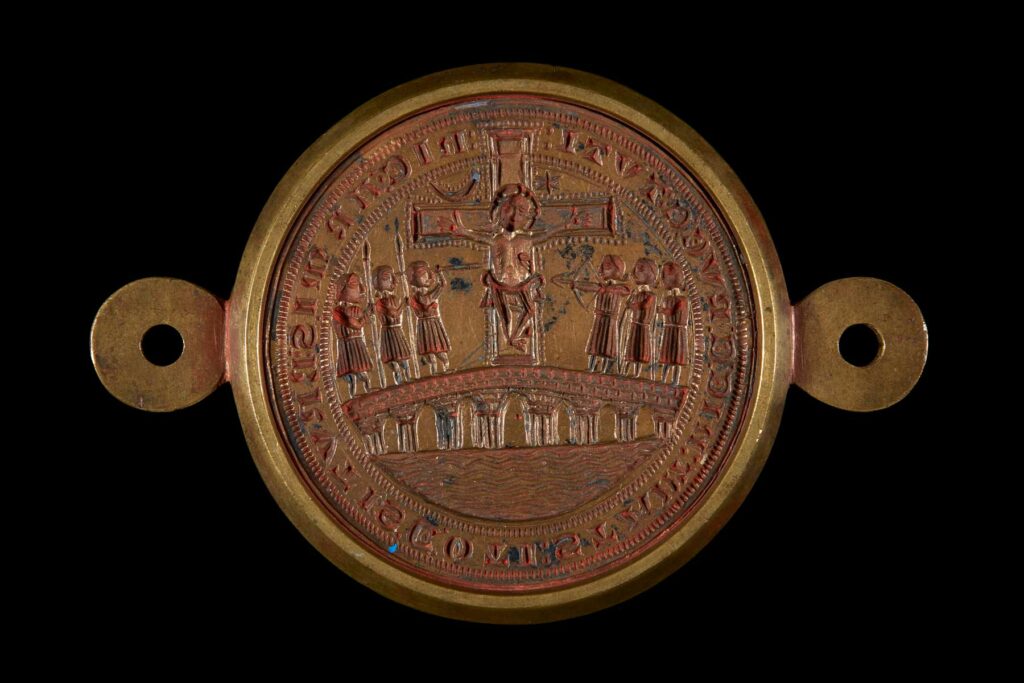
The Stirling Burgh Seal matrix was, incredibly, made as far back as 1296. It was used for making wax copies of the Burgh seal to attach to official documents. Made of bronze, it would fit into the palm of your hand. Decorated on both sides, its symbolism celebrates Stirling’s role in Scotland’s story.
The front of the seal has an image of Stirling’s famous bridge, with Christ on the Cross in the centre and armed figures on either side. As the lowest crossing point on the River Forth for centuries, whoever held the bridge at Stirling controlled access to the north and the south – it was said that “to take Stirling is to hold Scotland.”
There is an inscription in Latin around the edge which says:
In this is contained the Castle and Bridge of Stirling
Here stand the British saved by their arms; here the
Scots, saved by the Cross
In other words, God is on the side of the Scots; the British are only there due to the might of their weapons. With pikemen on one side and bowmen on the other these figures in fact reflect the very armies who fought at the Battle of Stirling Bridge just the year after the matrix was made!
What we do know from archaeological excavation is that the bridge on the seal with its seven arches is a good representation of the wooden bridge that stood over the River Forth at this time.
The other side of the seal represents the royal castle of Stirling surrounded by the forests that used to cover the land. The images from this seal have been used in the Burgh’s emblems and insignia over the centuries.